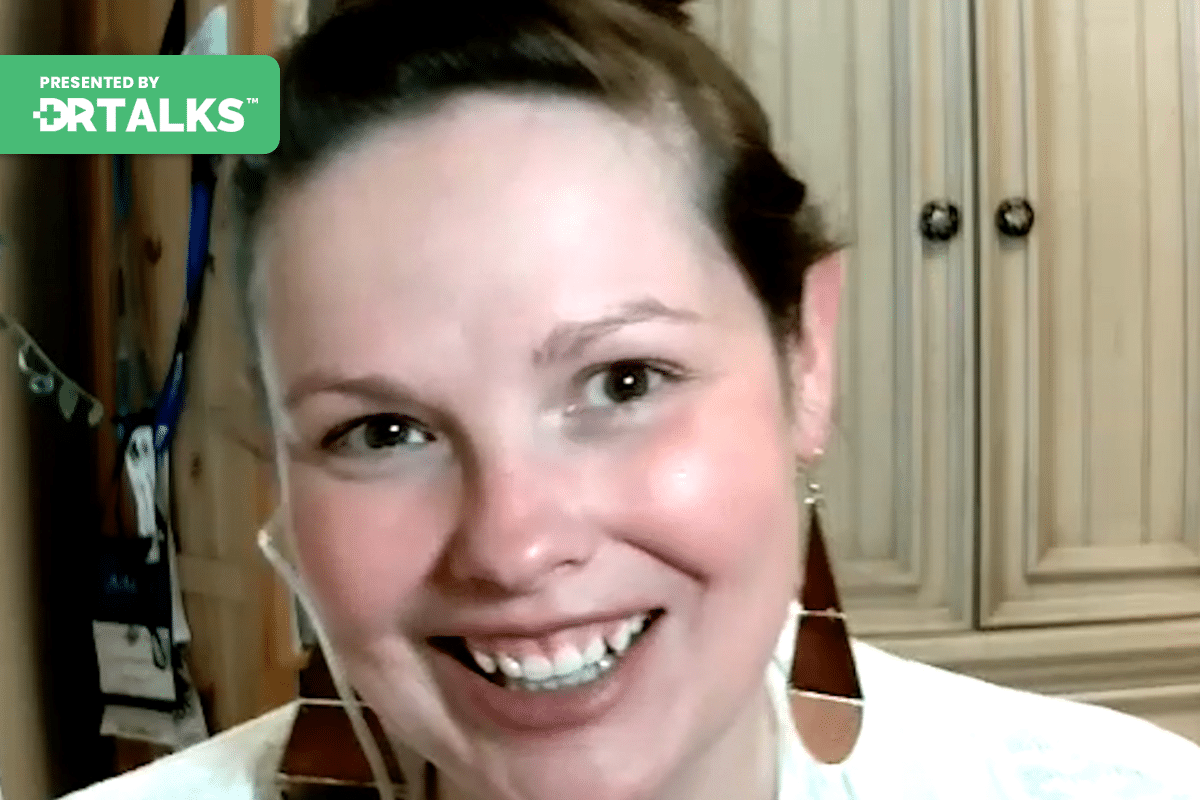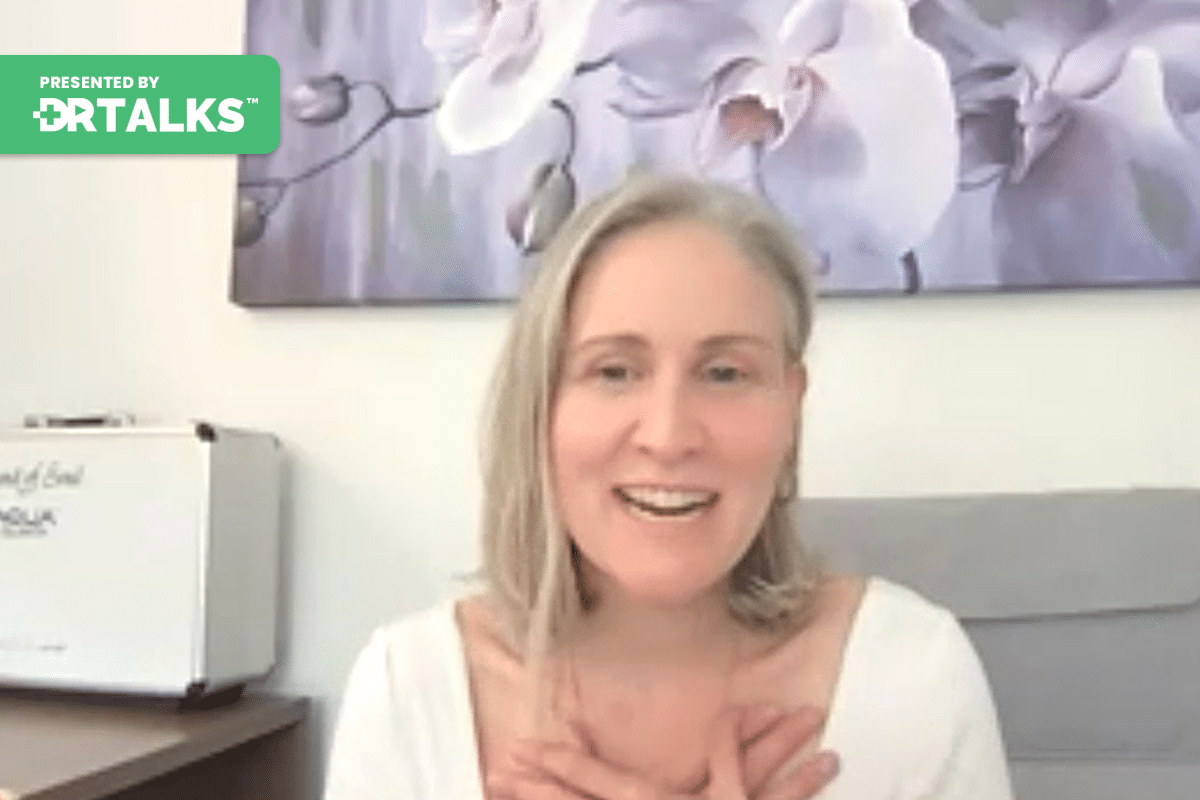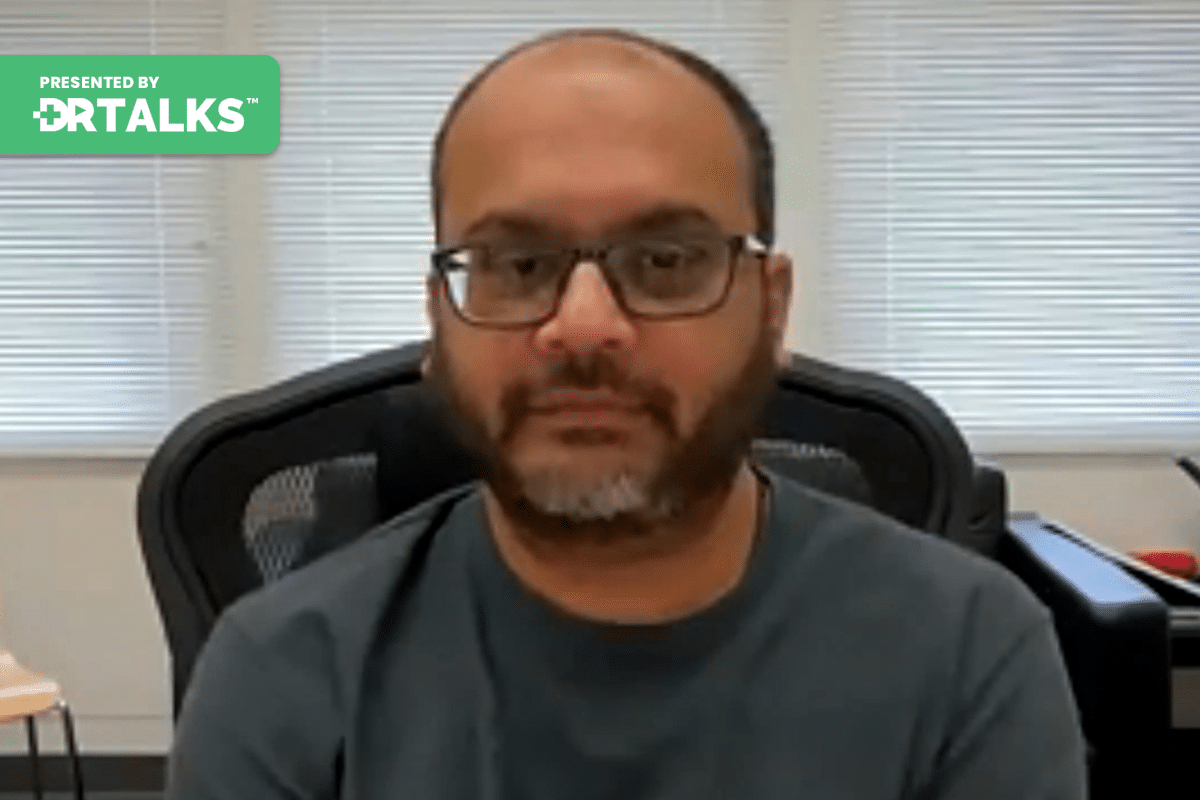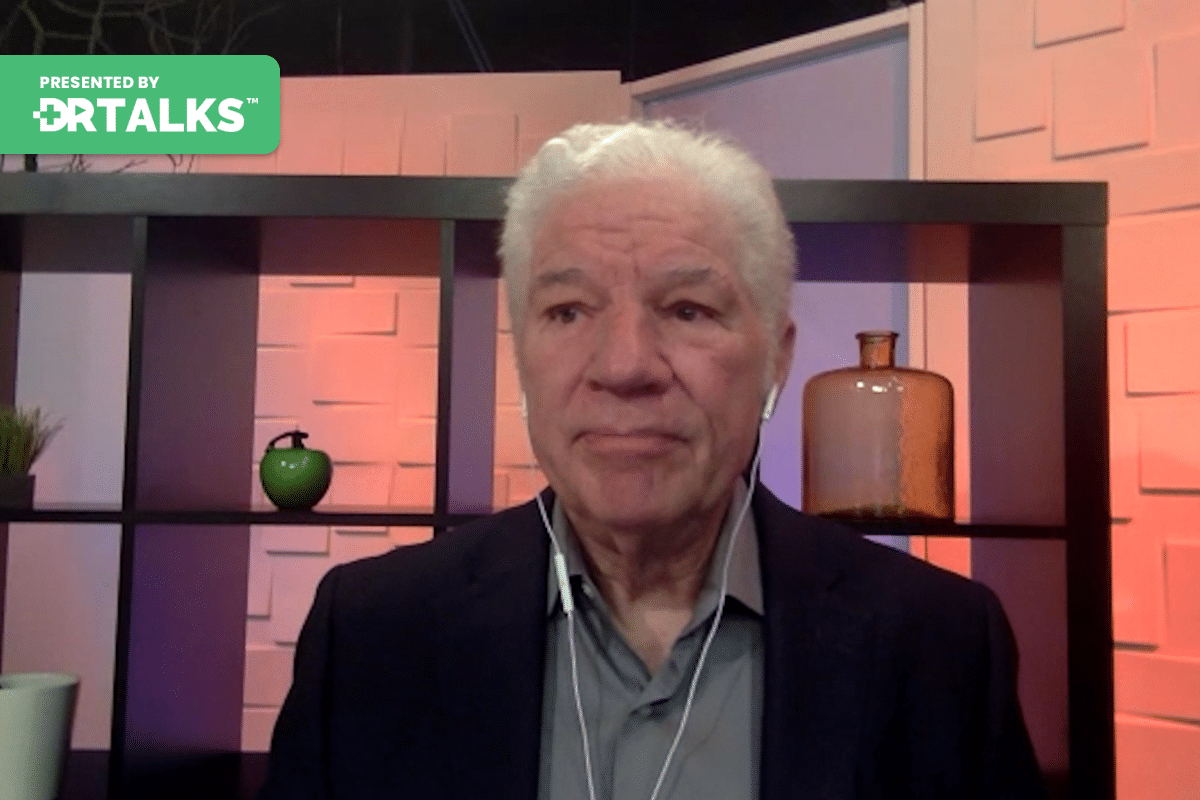Join the discussion below

Dr. Ann Shippy is Board Certified in Internal Medicine and Certified in Functional Medicine. She operates a successful private practice in Austin, TX where she is known for her compassionate, attentive, and tireless approach to caring for her patients. She has gained a considerable reputation for successfully diagnosing and treating... Read More

Lauren Tessier, ND, is a practicing Naturopathic Physician licensed by the state of Vermont. Her practice Life After Mold in Waterbury, Vermont is the East Coast’s only formerly certified, CIRS-literate Naturopathic practice. Life After Mold services patients suffering from multi-symptom, multi system illness, complicated by co-morbid conditions such as MCS,... Read More
- Understand the fundamentals of mold and mycotoxins and their exposure pathways
- Gain insights into the research demonstrating the impact of mold and mycotoxins on mothers and children
- Learn the specific effects mold and mycotoxins can have on the health of mothers and babies
- This video is part of the Mold, Mycotoxin, and Chronic Illness Summit
Related Topics
Allergies, Autoimmunity, Cell Membranes, Chronic Illness, Cirs, Co-infections, Colonization, Detox, Diagnosis Codes, Educate, Environmental Illnesses, Epigenetic Changes, Functional Medicine, Histamine Intolerance, Infection, Mass Cell Activation, Mitochondrial Injury, Mold, Mold Connection, Mold Illness, Moldy Basement, Mothers And Children, Mycotoxin Screening, Mycotoxins, Paradigm Shift, Remediation, Resistance To Treatment, Toxins, Water DamageAnn Shippy, MD
Welcome to another episode of the Mycotoxin, Mold, and Chronic Illness Summit. I am your host, Ann Shippy. Today, we are going to have a great discussion with Dr. Lauren Tessier. She is a Naturopathic Physician in Vermont, and she has had the unique experience of really getting to see a lot of people who have been suffering from mold illness being in a hurricane recovery area. This really inspired her to be heavily involved in a really unique organization called ISEAI, which helps other physicians and health care practitioners know how to recognize environmental illness and how to help their patients. I am really excited to have you today. Thank you so much for joining us.
Lauren Tessier, ND
I am so excited to be here. Thank you.
Ann Shippy, MD
We are going to talk a lot about some things that are really near and dear to our hearts, which is how these environmental illnesses, especially mold, can attack and affect mothers and their children. I think this is just such an important area that most people are not aware of.
Lauren Tessier, ND
Right. Absolutely.
Ann Shippy, MD
I would love it if you would tell us a little bit more about your background, how you got to this place, and really how meaningful all of this is to you, because I know it has really become such an important passion in your life.
Lauren Tessier, ND
Sure. Where to start? I know we have limited time, so I will be talking about the high points. When I got out of school, I hung my shields here in Vermont, and it was about two years after Hurricane Irene came through. People usually associate hurricanes with mountains in Vermont. But the reality is that all that water that hits the surface of the mountains has to come down to the valley. What might be one inch here or two inches here is going to pool in the lower areas. I, of course, moved to Waterbury. There you go. In the name, and we started working.
Ann Shippy, MD
Ready for boating, actually.
Lauren Tessier, ND
I know. They have had two floods, actually. It is impressive. It is that there are environmental impacts when we stop them. I think it is called dredging the rivers because of the ancient brook trout that we have in the area. Because of that, our floodplain widened anyway. I was working with folks and doing all the functional medicine stuff that you are taught as a naturopath, like fatigue, B12, iron, vitamin D, or all of the different things. I was just bumping into cases that were really resistant to treatment and really getting the budge going. Getting the needle to budge, I visited a client who had a basement office and did a little bit more digging, and found out it was water damaged. I did a little bit more digging and found out they did remediation. Just one thing led to another. I think this is mold. From there, the floodgates—literally, no pun intended—just opened.
Once you open your eyes to one thing, the connections start coming. I started to study everything I could get my hands on. what you should make a certification. I spent a lot of time researching and studying the work Dr. Pope and Thresher, Campbell, and all the big names. Then, in 2017, after I opened Life after Mold, I decided to get involved with ISEAI, which you mention in that you are also a wonderful member of, and we appreciate that. With ISEAI, we have just been really working on holding the community of physicians together to try to navigate this complex chronic illness that can manifest in all these different ways. At certain points in my travel through this, I have encountered mold myself twice, and I have gone through that wringer.
Then, when I look back at parts of my history, I had an uncle that was very near and dear to me in my teens or throughout my childhood, and he was diagnosed with an autoimmune condition that ultimately ended up taking his life. It was vasculitis of the nerves, granuloma, and ptosis. It has always stuck with me that he was in a basement daylight apartment, and we were going in to clean out his face and get him ready to come back from the hospital. From the first six weeks of being hospitalized and moldy in here. Then it just sat with me in my heart for a year. Then I look back on it and know that people say that there is no connection between mold and autoimmunity. But if you go into the biochemistry and the data and see all the shifts in your white cells and the inflammatory cascades, there is a connection there. I know you and I both see it clinically. That has always just egged me on that that was such a huge loss in my formative years that it is amazing that he is still impacting me to this day.
Ann Shippy, MD
People, both patients and family members ourselves, are our guideposts for how we expand. I mean, this really is a new area of medicine. It is not in the textbooks the way that it needs to be. We are part of figuring out the solutions because they are pieces of the puzzle. We are seeing it in our practice. I think it is so great to really be able to share the information about what we see is really working to help these patients because, now that you know what you know, your uncle did not need to die from this.
Lauren Tessier, ND
Now that I know what I know, I also know that I do not know everything there is to know, and I want to know exactly. All the time in the research, I spent way too much time in PubMed just reading and reading and having hours to go to.
Ann Shippy, MD
It really helps to fill in the gaps since we cannot just go to a textbook or a class and really learn everything we need to know. I love this part of your story because you started it by recognizing that you were missing mold some of the time. The same thing happened to me where I am; this is actually happening to a lot of patients, and we need to help them differently. What kinds of things were you discovering as you were starting to recognize that that really started to help diagnose and treat the patients?
Lauren Tessier, ND
Yes. I started in the CIRS realm, and, to each his own, I am a big believer that we can take something good from everything. There are some really beneficial things that we learn from CIRS. After I became CIRS certified in 2016, yes, absolutely. Do I have it? I actually have a little diagram I have worked on with people. This is the concept of molds. I consider that there are four major types of molds. We have allergies, which Western medicine completely gets it. Infection; Western medicine mostly gets it. But then I throw colonization in there, and then there is that toxic component, and then there is the CIRS component. CIRS, which I also just said is chronic inflammation. When I tell people and explain these to them, I let them know that there are really four types, and they can all overlap. You can have someone who has a colonization that has a mycotoxin reaction and also has that inflammatory reaction. CIRS was an illness theorized and put forth by Ritchie Shoemaker in the 90’s.
It was one of the very first concepts of mold illness out there on the block. When I was trying to do my research and put everything together, I needed to go and get certified. After studying it for a while, I finally hopped on it and got certified, and then, as I was moving forward, I realized that there is some really good stuff here, but I am not seeing the major benefits of protocols that are rigid. It really was something that allowed me to blossom forward and really decided to engage more of the aspect of the mycotoxin component and not just the chronic inflammation, because the mycotoxin component is what underscores, as far as I am concerned, aside from the allergy component, most of all mold-related illnesses. Why not dig into that? I found that colostomies were making people sick.
Ann Shippy, MD
That was so me; I actually found Shoemaker when I got sick. It was the only thing because I get sick so early from molds, and that was exactly that for me. It just made me worse.
Lauren Tessier, ND
Yes. Some people can tolerate whatever there is. When they do this, this is great. Cool. Moving on. But then, as time progressed, this language of mass cell activation started setting up histamine intolerance before really, Dr.Afrin was widely known, and I was having these folks, and why was this not a concern for me working? We were doing high-dose fish oil, what is happening here, and so I stepped out of that space and I stepped into my own power, and I started researching and learning on my own, and then I started, I do not call it protocols because there is no dogma in medicine.
Ann Shippy, MD
I am really emphasizing here that each person is so individual and unique. How those circles all merge is so unique to each person, and it really is helpful to look at that.
Lauren Tessier, ND
It is. We will get into it in a little bit, but it varies from person to person, from genetics to genetics, from sex to age, from the type of mold to the length of time exposed to that. Many things are involved. Also, never mind all the things that can co-occur with it. Yes, I branched out on my own and started doing a lot more than toxin work. The urine mycotoxins screening and really started working on doing a good amount of preparing people for detox before doing so. Then, after moving through that micro-toxin detox, addressing all the co-infections and all the things that may have popped up along the way. It has just been an absolute learning, gamut gauntlet, and it continues to be, and I love it. It is a subject I have not gotten tired of yet. somehow, after ten years, got me on it. I think it is a good sign.
Ann Shippy, MD
Yes. I think as the technology improves, for us to even be able to dig deeper into how the toxins are actually injuring the mitochondria, injuring the cell membranes, and causing the epigenetic changes, I think we are good until retirement. Hopefully, it will get easier and easier to map out a quick path to recovery. But sometimes it is pretty challenging to find the best path for each person. But I really love how you are breaking it down and thinking about it.
Lauren Tessier, ND
It is going to take a paradigm shift. These summits are great because they help educate people on the superficial path of what to look for in a provider or what their first steps might be. I think the best part of these summits is that they get the word out and get the word of mold and mold illness into the psyche of more and more people each time, which is what we need for representation, research, and proper diagnosis codes. Do not get me started on that. Yes, it has been amazing. I find that a lot of the work that I do in my practice is with women and children, and I love it.
Ann Shippy, MD
Tell me more about what you are seeing in moms and their children.
Lauren Tessier, ND
Sure. If we take a step back and we think about why mycotoxins do what they do, or I should take a step even further back, and I am sure someone’s going to give this friend down somewhere else in the summit. But molds are the organisms. They are the little living things, and mycotoxins are the toxins that they secrete. Not all molds make mycotoxins, but some do. Molds only do it when they are stressed out. There are all different brands, reasons, and amounts that they make. Mold and mycotoxins do different things. Mycotoxins cause a lot of damage through their lipid peroxidation, or their ability to go in and oxidize, causing oxidative damage to anything that has some type of fat. The problem there is that we are made of fat. It is not just the brain, liver, and kidneys; it is our cell membranes, the membranes on the organelles, and the machinery in our cells. When these mycotoxins go in, they damage all those lipids. As soon as a lipid is damaged, there is a whole cascade that happens in the body where inflammation follows.
When we are thinking about how these symptoms pop up in men, children, and women, I tend to think about what is happening from an inflammatory perspective. But to get down to the nitty-gritty, these mycotoxins can also mess with the hormones separately from the inflammation. They can change how they are created; they can change other metabolites; they can go and alter the receptors that these hormones are sitting on. They can stimulate a receptor and cause a cascade, as if the hormone is actually doing its job there. When I think about women and children, what usually pops up for me is the inflammation part of the hormonal part, because women and children are a menagerie of hormones that are all in.
Ann Shippy, MD
Most women would agree with that.
Lauren Tessier, ND
I mean, not with this, but in a non-derogatory way, I do not know.
Ann Shippy, MD
It is just that that is a big part of being feminine. Is that we have these hormonal cycles, and we are really dependent on having a good hormone balance to have a good life, be fertile, create children, and do all the other things that we want to bring forth in our lives.
Lauren Tessier, ND
You hit the nail on the head because, if we are thinking from the hormonal perspective, one of the biggest issues that we see in adult females can be infertility, decreased libido, changes in menses, early perimenopause, and mid-cycle spotting. What else do we have here?
Ann Shippy, MD
I think there is also an association. I do not have the science to back it up, but I see more endometriosis and fibroids.
Lauren Tessier, ND
This is the hard part about the fact that we do not have the science to back it up; we do, but it just happens to be animal studies and cell line studies. We are never going to be able to put someone in a box and expose them to mycotoxins. It is unethical. We cannot do it. We legally cannot do it, and I would never want to do that. But we do know that hormones contain a particular mycotoxin that is unknown, zearalenone, and that it is such a strong estrogen mimicker that it can occupy our own estrogen body sites up to 2 to 3 times more tightly than our own estrogen. Its strength and signaling run on par with 17-bit estradiol. It is amazing. That is, when it comes to mycotoxins, if there is one that you can potentially say that I always operates in a certain way, it is zearalenone. We consider that one an estrogen mimicker, so much so that in developing nations, they will use an extract of zearalenone to keep cows in their milking cycle and in their estrus.
Zearalenone is pretty much the only mycotoxin that you can reliably say is probably going to happen this way. But with all the other mycotoxins, it is a crapshoot. Again, it is dependent on our genetics, how much we are supposed to, what else is going on in the body—all these different things. But it is also not just female hormones that get messed around with. We also have testosterone in the female body, that can be modified by these hormones. We have pregnenolone that can be shifted. We have our thyroid hormone, which can be shifted. If I had a penny for every time I have seen almost a new thyroid, a normally acting Hashimoto’s as a result or correlated to, I would say with someone living in mold exposure, it is more often than not, to the point that we are starting to see in teenage boys, which blows my gut.
Ann Shippy, MD
Even though we are focusing on women and children, the effects on men are also profound.
Lauren Tessier, ND
Right.
Ann Shippy, MD
Do not discount that at all. Because, yes, definitely, the rate of infertility in men and the hormone disruption in men are also factors.
Lauren Tessier, ND
Absolutely. There is also maybe a little bit of bias. Women tend to be the biggest health care seekers in the family.
Ann Shippy, MD
Tough it out more often.
Lauren Tessier, ND
I know. Men are always put to shame. God forbid they talk about how they feel. There are lots of layers to unpack for men’s health, for sure, when it comes to mold. But other things that we see for women’s hormones are going to be even more fibrocystic breast stuff, breast pain with cycles, and even hair pattern changes. Those tend to be the ones that are more female-related. But then we have everything else that goes with it. The exercise and issues, the wandering pain, the severe fatigue, the brain fog, the glucose metabolism—you name it, we can drop back to mold. We can drop back to mycotoxins. That really has to do with the fact that they have the potential to interact with and damage every little fat molecule anywhere in the body.
Ann Shippy, MD
I describe it as just seeming to find whatever your weakest points are.
Lauren Tessier, ND
That is a great point. That is a really beautiful point.
Ann Shippy, MD
For me, my hair was falling out in clumps. I had so much pain in my body, and I was actually starting to have quite a few neurological symptoms. Those are just my weak points. somebody else, that might be more their gut, or the brain fog, those kinds of things.
Lauren Tessier, ND
Absolutely.
Ann Shippy, MD
Do you want to tell a little bit about your story?
Lauren Tessier, ND
Yes. My goodness. Let’s see. I definitely have acute respiratory complaints, and along with them came brain fog, potentially some liver issues, and then some autoimmune issues. I am definitely someone who is on the forefront of the autoimmune experience with mold and has done a lot of work around it. The way it really manifested for me with the fatigue and the myalgia, I used to say that my muscles felt like pulled pork, and then I would write, and then I would have trouble just because I would be headed somewhere for the day, and I would look at my purse and be on the verge of tears because I did not know what I should put in my purse to leave the house. Or we were moving into a new home, and we knew that there was an issue that we were going to fix. But before we fixed it, we said, Okay, let us paint the walls. Look at the minutia about how we were waiting to do the heavy work. I remember sitting on the front porch and trying to count in my head how many gallons of paint were needed for each room. seeing one, just being completely incapable of it, and living off Post-it notes and hair loss and thyroid issues, yes, I am glad to have this mostly behind me.
Ann Shippy, MD
One of the things that I really want to be a continuous theme throughout this summit is hope. What I really respect and admire about your story is that you seem to have fully recovered; you were pretty bad, barely functioning as a human. I could not compete. I guess now, look at you! You are doing all this incredible work and research and contributing so much to your community and patients all around the globe.
Lauren Tessier, ND
But you do not know what it is until you go through it. You do not know. Most providers who are in this field are really forward-facing and have a grasp of it because they went through it. Not everyone shares their story, but yes, you see that more often than not. They become the people who either have to help themselves or their family, and then they start the pattern recognition, the human habit of pattern recognition and patience, and then they make the connections.
Ann Shippy, MD
Or I might describe myself as a kinesthetic learner. That is part of why I love math and science—because you can apply them. You can learn as much as you want from it. I keep thinking, Okay, I am willing to learn other ways. But you are. You are exactly right. The best way to learn about how to recover and how to get through it is to actually experience it in your own body.
Lauren Tessier, ND
It is amazing, and it is humbling. I think the hardest part about all of it is that you and I have our words for our experience, and we can give those words to other adults and show them how to communicate that to other people. We cannot do that with kids.
Ann Shippy, MD
Let us talk a little bit about how you approach kids.
Lauren Tessier, ND
Yes, so what I will say before I go into this is that about 5% of my patient population are teachers. Okay, I think there are only either 1% or 0.01% of the US population who are teachers, which gives you any concept of how
Ann Shippy, MD
We have a problem in the schools.
Lauren Tessier, ND
We have a problem in the schools.
Ann Shippy, MD
Get to the dorms. It is crazy.
Lauren Tessier, ND
Even the elementary schools now, and if in one sense yes, and the teachers are acting as the canary in the coal mine and one teacher is sick, then one about all these kids that are moving through that with ADD and autism spectrum and all this stuff. I am not saying that there are no true causes for that are not mold. But the literature really does show that kids who are exposed to water-damaged buildings are going to have a higher incidence of neurological complaints. There was even a study that shows that these kids have decreased scores on competency testing that is done when they enroll in preschool. There are even some studies that show kids who are exposed to water-damaged buildings for an extended period of time after birth have a three-times higher risk of having a lower IQ. The longer that they are exposed to these spaces, the deeper and more profound the severity of the IQ deficit. Know that just points to the fact that we have these little brains on fire and they cannot necessarily convey, they cannot tell you that their brain fog is that they just might act out that day.
Ann Shippy, MD
They are very frustrated.
Lauren Tessier, ND
With children, it is not just the neurological stuff. Immunological impacts are huge; we have decreased in salivary Ci-Rga, that first line of defense all the way through our digestive tract against any foreign intruders. We have spikes in a lot of the inflammatory markers, the CRP, IL-beta1, and IL-6. We have T-cell suppression in kids, not just in the general populace, who have tons of information about the toxins and the immune system’s functioning, but in the little ones to suppress the Ci-Rga ratios that happen. When you look at more of the quality of life studies that go along with this, we see that kids who are most exposed tend to visit their primary care more, tend to use emergency care more, and tend to have more incidences of pneumonia, which we will put a pin in. That actually means more antibiotic use and more absences from school. You are having a larger drain on the health care system because of these little people that are exposed.
Ann Shippy, MD
Really shocking to all of us, as on the EPA website. I heard that schools are being more proactive about providing a clean environment for their students and their teachers.
Lauren Tessier, ND
Yes, equal parts. I do not know. My mom was a teacher.
Ann Shippy, MD
Me too.
Lauren Tessier, ND
Yes. Water damage to buildings. Even I will not go too much into it, but I just do not know if it is burnout in administration, a lack of funding, or the hassle. It feels more high-level—just all of the above. It is outrageous how many public schools have issues. It is just because it is mold. We had a local high school here where they found PVCs, which are forever chemicals. Right in the caulking. So the high school got shut down, and there were lawsuits that happened. But no one cares about shutting a school down for mold because it is everywhere. It is not that big a deal now.
Ann Shippy, MD
You have to change that paradigm.
Lauren Tessier, ND
I am hoping because, again, going back to some of these allows for more verbiage. More verbiage speaks louder. People demand representation, and things follow through with that. It was nothing in the eighties. It was considered quackery. I would even say up until, say, five years ago, when the CDC started to incorporate whispers of it on their website, I would think that mold would have a quicker sea change with it, but I think it is going to be slower also just because of all the vested interests that exist with pharmaceutical companies, with insurance companies, with homeowner’s insurance, business insurance, health insurance, etc. There needs to be a sea change here, but there are so many sticky hands. The part that I worry about is the delay in it happening.
Ann Shippy, MD
Well, probably just the cost of fixing all these buildings. But if you look at the cost to human health of what is happening to our health care system with all of these people being affected by it, I think it is a better trade-off to fix the buildings.
Lauren Tessier, ND
Yes.
Ann Shippy, MD
The human suffering is great, but I think the cost is overwhelming.
Lauren Tessier, ND
Yes, I agree. If there is no diagnosis code, then there is no representation, and we can sweep it under the rug.
Ann Shippy, MD
Yes, I am combining the kids and the autoimmune issues. One of the things that I also think is another epidemic that is happening is PANS and PANDAS. Yes, do you want to share a little bit about what that is, how you are seeing it manifest in your practice, and the things that you can do about it?
Lauren Tessier, ND
My goodness. I will, first of all, throw this out here. My dear friend Jill Christa has a book out called A Light in the Dark for PANDAS and PANS. It is a wonderful book and a wonderful reference for people. Also, Nancy O’hara has another wonderful reference on PANS and PANDAS. I am by no means an expert in PANDAS, but I would say most of my work focuses on neurological recovery for people. Well, I do not really aggressively classify things as PANS and PANDAS in my practice. I do speak a lot about neuroinflammation. PANS and PANDAS are very simply put: Please, no one come for me. It is an autoimmune reaction of the immune system to the nervous system that is typically triggered by some type of incendiary little thing in most cases.
Originally, the cases were strep, and that is where the PANDA component comes from. Strep was directly incorporated in the title. But as time marched on, people realized that some of these autoimmune and colitis cases were happening in kids in the absence of strep. These kids happened to be involved. These kids happened to have heavy metals around them, and these kids potentially happened to have recurrent herpes simplex family redundancies with Epstein-Barr and CMB. So the take-home is that we are seeing autoimmunity in the nervous system, and the first step is really trying to put that fire out and then eradicating whatever the initial causes of it are still there, and then trying to heal that and then bring it back into balance. Yes, I hope it goes.
Ann Shippy, MD
What are you finding in your practice? Are the main things to happen or recover from.
Lauren Tessier, ND
Yes. My favorites fluctuate from person to person, depending on what they tolerate. That is another thing. Not everyone tolerates everything. One of my favorites are PQQ, PEA, a low-dose naltrexone with super-duper-high doses of phosphocholine and phosphoserene. Every now and then, I will use a skullcap. I am not a big skullcap person, believe it or not, for a naturopath. I do not use herbs that often.
Ann Shippy, MD
This population’s herbs are tricky.
Lauren Tessier, ND
They are. They. They’re tricky. Because of that mass cell component, you never know if there is hidden oxalate in that herb or if the batch has mycotoxins in it. Yes, so I’d rather go with something that I can get a USP on because it is going to have one anyway. Other things I end up using are, in my opinion, melatonin, and if I could put anyone on melatonin, anyone. There has been so much fearmongering with regards to melatonin recently that it is horrible. It is so. I know. I know exactly what you are going to say.
Ann Shippy, MD
I should not say it has been yes; there are forces that do not want some of these things that are super helpful to be known.
Lauren Tessier, ND
Maybe yes, so I agree. Melatonin is another one. It was just starting to gain popularity for its system-wide antioxidant potential and the increase in sports performance.
Ann Shippy, MD
That it really helped with COVID.
Lauren Tessier, ND
Don’t say that for a lot of us; there is one other one that I need to mention before. No, it is gone. Gone out of the brain forever.
Ann Shippy, MD
We can come back to it if you think about it.
Lauren Tessier, ND
One of the favorites that just came out is vinpocetine. Not a lot of people use it. It is not legal in every country worldwide. It is a periwinkle extract, and it increases cerebral perfusion. I really find it helpful for people. But you need to make sure that before you start driving blood to places, all of the outflow is open and that your body is ready to receive everything that is going to move and come out with it. That has been such an enjoyable tool to work with. It is not helpful in all cases, but in some cases it is the AHA driver, which is really cool.
Ann Shippy, MD
Yes, and it has such great research on it for cognitive decline. and that makes total sense. I think that is a good little tool. How are you finding it in your area for helping people get their spaces remediated or find safe places to live? It seems in a place where there has been all the flooding, it can be really, really challenging to find the tight people and get the things done. Even here, where I am in Austin, Texas, we just do not have very good building quality. So we have an epidemic of high heat and moisture issues, and then there are the poor houses we’re building. But the places where you are, where you had two big floods, I cannot even imagine.
Lauren Tessier, ND
I think each area of the country has its own strengths and weaknesses when it comes to building homes. I love that I have a basement. I love that I have a basement. It is not finished. In fact, it was finished when we first bought it, and I held out patents for it. Of course we found stuff too, and I was totally validated. But there is, and each home in each climate can have its strengths and weaknesses. I always try to help people step back from the edge of running off to the desert.
For some people, that is their solution, but it is not for everyone. You can remedy a home; you can remediate it; you can bring it back into balance. I never suggest people do it on their own. However, I have seen people do it on their own. I have seen people self-remediate correctly. But if you do it, you need to act as though you are a mediation company being paid $50,000 to do it. You cannot cut corners, or you will get sick and ruin your home. When we tell people not to sell for media, it means you can, anyone can. But the reality is that you need the tools, the skills, and the protection. You need to do it the right way. There is a great book out there called Mold Money for people who cannot find someone to remediate for them. It is a great book. It gives you the rundown on how to use negative pressure, how they drape the six-millimeter plastic, and how to do all these things. But you cannot just go in, swing a hammer, and be done with it for the day. In fact.
Ann Shippy, MD
I have seen people do that, and they have gone from the frying pan into the fire. They have just really gotten sick, and they did not set up the containment and wear the protective gear.
Lauren Tessier, ND
We drive people to really do the remediation through a company because then you also potentially, as a consumer, have the economic protection of having a post-remediation verification, which means testing before and after remediation to say, Hey, look, problem solved. If a remediation is not done to an agreed-upon expectation, then there is recourse for you if you go in and do it yourselves; there is no recourse for you. I do tell people, Do not do your own remediation. A lot of people live in food deserts.
We have remediation deserts and IDP deserts. I have four remediation team and one IEP locally who has a coworker that I trust that I send people to all the time. Because if there is a problem, they are going to find it. I understand that I have worked on that relationship and grown that relationship. I have introduced them to the concept of people being really sick, and sometimes it is just a matter of proving it. I guess you would say this to someone who cares, someone who is in the field, but maybe they do not have the experience. Just because there might not be the best IEP or the best remediation company in the area does not mean that relationships cannot be formed or expanded. dialogs with. I have a video on my YouTube channel that handles life after mold pretty simply. There is a video about how to find a good IP that walks people through it. What questions do you ask? Where to get the answers that you need and where to find a list of people. I would be remiss at this point to not mention it.
Ann Shippy, MD
Please do. It is an important advancement in medicine.
Lauren Tessier, ND
Yes. ISEAI, and we have an amazing group of physicians who are mold literate or working towards becoming mold motivated to be mold literate and in peace. I believe we might have a couple of remediation teams there. So you can go to the Get Help page there and find a list of some of these providers. Again, not an endorsement, just letting people know that in our IEP team, an amazing group of people came together, and they have been knocking out these amazing documents. The most recent one was the 20,000-foot view of what a remediation looks like, and then they put out one on mold testing, and those are both available on the website and have been downloaded like wildfire across the world, which makes me so happy to be able to do that.
Ann Shippy, MD
One of the things I love about this trip is just all the discussions that go on, the email links, and tossing out ideas because these are really new frontiers. I think getting a lot of really smart people to look at things in different directions is really how we move things forward. That is a great resource.
Lauren Tessier, ND
It is. We cannot do it all on our own. It is wonderful to really have a community form around that and give voice to the voiceless. I worry the most about the kids and all of this.
Ann Shippy, MD
Go back for just a minute. Do you want to talk a little bit about exposures during pregnancy and breastfeeding?
Lauren Tessier, ND
Sure. Absolutely. There is plenty of data on pregnancy and breastfeeding exposure, and that really comes as a result of research that has been done in developing nations where they have a lot of mycotoxins in their foods, and so some people might say, Well, that is food-based mycotoxins; it is not the same. My gripe is that in animal studies, we have seen that inhalation hazards have a 20- to 20-fold higher bioavailability than direct injection into the gut. Inhaling is potentially more exposure-giving than eating. Now that we have found that, let us go back into the food data and let us say that all of these mycotoxins in the foodborne studies that we are looking at might be a fraction of what we would see if these folks were exposed through inhaled exposure. As far as I am concerned, I do not care about how it gets in. I do not care if it is through the mouth, through the nose, or through the olfactory bulb. As soon as it gets into systemic circulation, it is game on. That is how I phrase it: Game on. It is going to hit every part of the body through circulation. What we have seen in the studies is that mothers who consume mycotoxins from corn and grains have the ability to transport mycotoxins through the placenta to the developing fetus and also to the best-known, which we call vertical transmission.
I think one of the most upsetting studies that we found was that maternal foodborne exposure can result in neural tube defects to the point of an abortifacient level. Theoretically, if you are eating enough mycotoxins, you can lose your pregnancy. If that is not enough to put a full stop to the conversation, I do not know what is. But it is not just the neural tube defects that are fatal; we also see in little peanuts decreases in height and weight compared to the standards we have seen, made evident also by drops in our growth hormone levels for them. We have even seen issues where young girls develop flashes and puberty from long-term exposure to that estrogen mineral. That is the one we can hang our hat on; we know what is going to happen. But yes, it is problematic, and there is also a risk for neonates who were exposed to aflatoxin in utero to develop neonatal jaundice, and that could either be a result of a liver issue or it could be a result of a tell me with the word camelisthis. Yes, all of the destruction of red blood cells—I mean, there is so much that happens there. It is unfortunate because this is how we provide nutrition to this growing little human. I hate to say it, but if cows are being fed grains and we are relying on formula, that vertical transmission exists there, too. We’ve got to be as careful as we can. Then what makes it difficult is treatment. Treatment of pregnant women is a dangerous horizon, meaning that we do not have the data and there is the potential for maybe making things worse. I would love to chat with you about that, too, if we can.
Ann Shippy, MD
We should have an outside conversation because my preference and what I wish I had known before I had my kids—knowing that I had lived in multiple moldy houses and looking back at leaks that were not fixed properly—I really wish that I had known it before I got pregnant because I am sure that I had some in utero. Then, for both my kids, I breastfed for a year. Not that I am saying the formula would have been better. Obviously not. But yes, if I could roll back time, that was before mycotoxins were available to make up a toxin. Testing was available. But for anybody that is listening and that is thinking about getting pregnant, it would be great to test your levels and really make sure that your levels are below the cutoffs and the mycotoxin testing before you get pregnant so that you make sure that you are not having your baby start out with a high mycotoxin level because their little immune systems are not developed yet and their detox pathways are not developed yet. We wanted to try to minimize all the toxins, not just the mycotoxins, but especially the mycotoxins, because in their little bodies they do have such a profound effect.
Lauren Tessier, ND
I think you are really hitting on something here where prevention is really the best course of action from a provider standpoint. There is a very fine line between treating someone who is pregnant versus treating the pregnancy. If you are not a midwife or a nurse, you cannot treat a pregnancy. If you have someone come to you who is pregnant and they are mold-exposed, what am I going to do for treatment? You need to pump the brakes, and you really need to think about what you can do with the tools that you have that is going to be safe. If you go into the data, you do not. That is the thing that we have caught.
Ann Shippy, MD
We are getting them out of there hurt and getting them in a clean environment.
Lauren Tessier, ND
Exactly. We have some parallel data, if you want to think of it that way, where women who overdose on Tylenol while pregnant are provided with charcoal and a self-sustaining diet. The pregnancies that they are carrying now, in most cases except for one in the literature, turn out healthy. However, that is not mycotoxins. We cannot correlate that there. However, we can say that charcoal is, in some instances, safe in pregnancy, as is NSCLC in some cases. We have to then also consider that when you start to give people binders, which is what charcoal is, you start to mobilize things. When you mobilize things, you have the potential to have them land in places you do not want them to. There is almost this do not wake the sleeping dog thing. When our body does not know what to do with things, we tend to stick them off in fat and fluid. That is why you see so many people gain weight when they are most exposed. If we cannot wait for Sleeping Dog and find a way to very much help a pregnant woman that is within safe means, we’re going to do it through the inventories. We’re going to say we want you to drink more water. We want you to make sure that you are having two bowel movements a day. We want to make sure that you are eating more fiber because fiber can act as a binder. There are certain things that can be done that are lifestyle and do not go as far into treatment as giving A plus B equals C, giving one ingredient, causing this reaction, and having an outcome. Instead, we’re trying to do the things that help the body move through these things naturally, and the other thing about these.
Ann Shippy, MD
Things, just to remind everybody, whether they are pregnant or not, but those are really important pieces of getting well.
Lauren Tessier, ND
Right? Absolutely. You need to have the outflow if your outflows are closed out, but it is not going anywhere. It is all. Then there is the other issue with binders, which they will say in pregnancy is that there are so many nutrients that that little bud needs that are growing and expanding, and binders find them indiscriminately. That’s their job. They find other things and throw a binder into a GI Tract. I am just not clear that it is a good thing to do during pregnancy.
Ann Shippy, MD
Yes. Too many unknowns.
Lauren Tessier, ND
Exactly. I am on the side of caution. I am not a cowboy in practice by any means. I go slow, and I think so. First, do.
Ann Shippy, MD
No harm, yes. Well, I am so pleased that we got to have this time together, and we’re so aligned on so many things with our power, our lens, and our way of looking at things. I. I know you also have a gift for the audience. Do you want to take a minute and tell me about that?
Lauren Tessier, ND
Yes, absolutely. For this particular event, I have my mycotoxin cheat sheet, and that is going to outline all the common toxins that you see come up on the various different mycotoxin tests and the correlated molds that have the ability to produce them. You can use it as a little bit of a guidepost when you are comparing your urine mycotoxin test to your home testing. That is free for everyone who signs up. Also on my website, if you sign up for my newsletter, people can get access to my mold prevention 101 e-booklet, which gives you a beautiful rundown of the hot spots to look out for in a home. So it gives you a nice rule of thumb: every few months, do a walk around the house, check the wet walls, check the French drains, check the dryer vents, and see what is happening there. Yes, both of those are available to people today.
Ann Shippy, MD
That is so kind of you. Thank you so much. Really, the more prevention we can do, the better. I thought that checking the house to make sure there is nothing brewing and then tipping you over later was a great idea.
Lauren Tessier, ND
Right, well, I appreciate that, and I am so thankful for being here today. If people do want to find me, they are welcome to check me out on most social media platforms with the handle, Life After Mold. I am on Twitter, Instagram, Facebook, YouTube, and TikTok. I guess it’s up to you. Okay, I am trying. I do not know. Yes, you can find me out there, although I am typically most active on Instagram, so that is great.
Ann Shippy, MD
I love your passion for this and your wisdom and intelligence on these really complex topics. Thank you so much.
Lauren Tessier, ND
Thank you. It is so nice to meet a fellow mold nerd.
Ann Shippy, MD
Yes, we could probably go on for days. Well, thank you so much. I look forward to seeing you again soon.
Lauren Tessier, ND
Thank you so much.
Downloads










